Archery history: Ancient archery equipment around the world
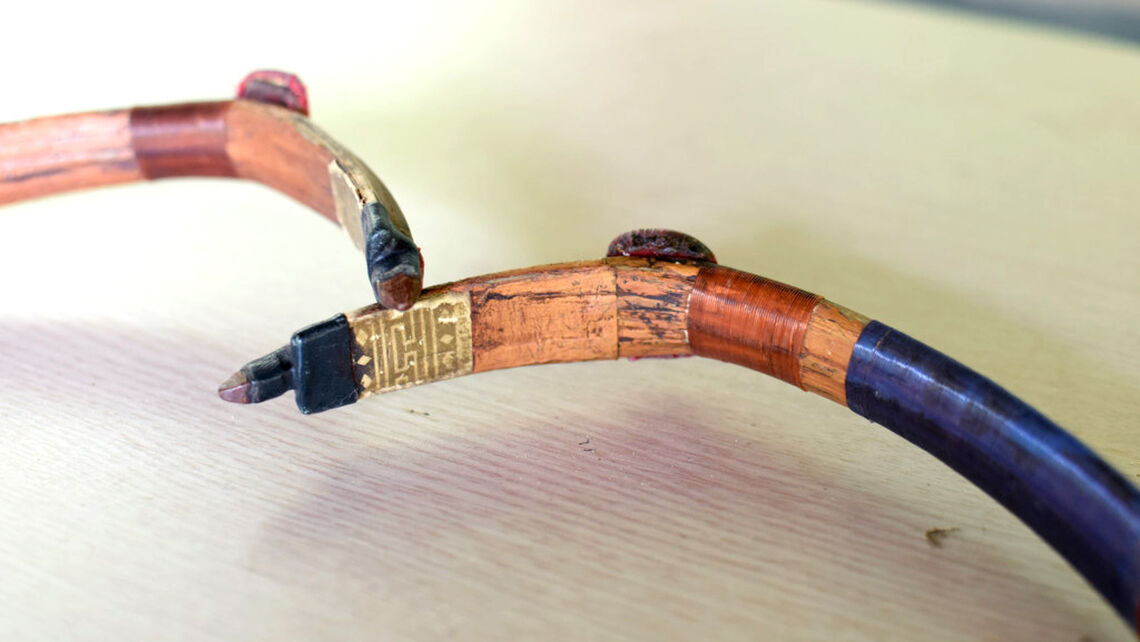
A stroll through most museums will usually lead to a collection of bows and arrows acquired throughout history.
The Manchester Museum and the Pitt Rivers Museum in Great Britain, for example, as well as the University of Missouri Museum of Anthropology, in the USA, each boast an impressive collection of archery materials hailing from across the globe.
And rightfully so, because archery’s vast history demands meticulous documentation and preservation. The use of natural materials that have been frequently used in all kinds of conditions, however, makes preserving bows and arrows difficult.
Nonetheless, there is no shortage of the genres and origins of equipment somebody could collect – and through all eras, from the-near modern and back to prehistory.
This is a list of may of the different types of bows and arrows found around the world.
Turkish Bow
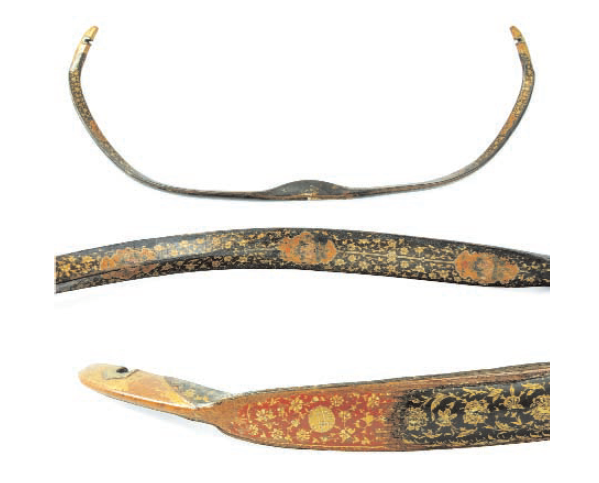
This composite bow from the 18th century would have been made with a wood core, a sinew backing and a horn belly. Used for target archery as well as war, the Turkish bow was designed for use on horseback – and to send light arrows a long way.
Bows from this region were often highly decorated. This one, measuring just over one metre long, is painted brown and decorated with a gold floral pattern; there are three elongated medallions with floral motifs on each limb.
Indian steel bow
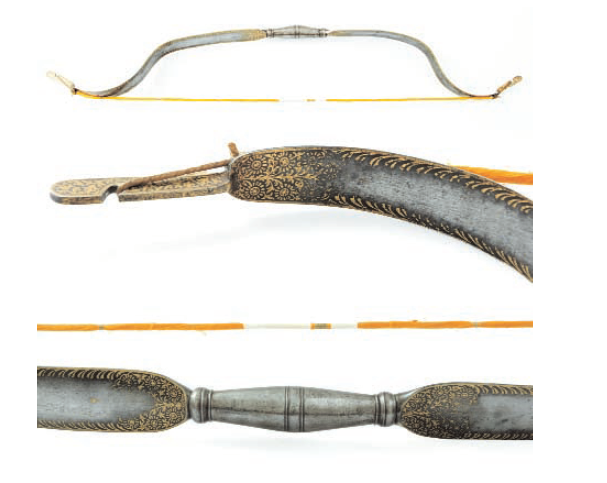
Steel bows, while lacking in cast and range, were popular in late Mughal India in the 1700s. They were both military weapons and status symbols. Often handmade and hand-forged, with extensive decoration, they often came in two pieces for easy transport. This example has a detachable upper limb.
While steel bows are not as efficient as composite bows, they did not need to be unstrung, allowing them to be kept in the house as a defensive tool. Steel bows were also once common in Western target archery, especially around the early part of the 20th century.
California-style reinforced bows
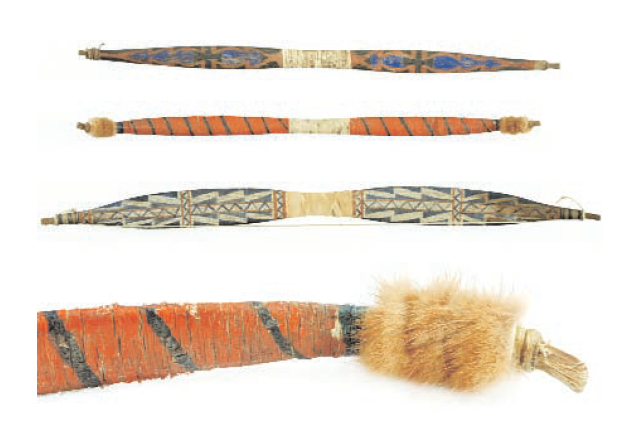
The bow was used widely across both continents by the time Europeans made contact with the Americas. The self bow, made from a single piece of wood, dominated in Central and South America.
However, reinforced and composite bows were also used by native North Americans. These shorter wooden bows with sinew backing were used by horse archers of the Plains, whereas sinew-backed bows with wide, flat limbs were found around northern California.
These highly decorated examples feature deerskin and fur, which would have kept the bow quieter on release. The top one was made by the Tolowa tribe.
Northern composite bow
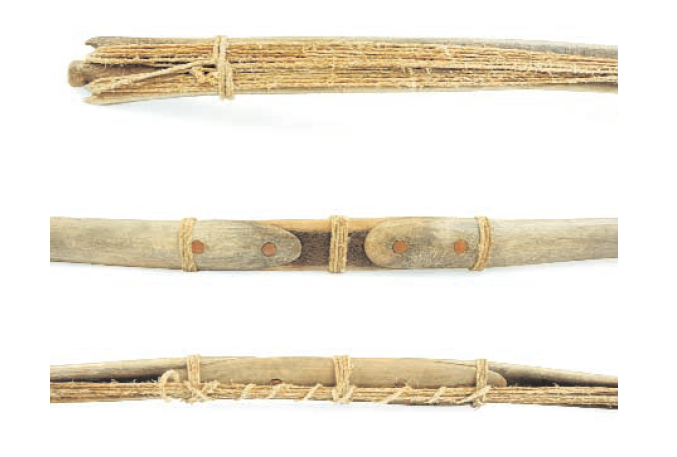
This bow, manufactured in Canada in the 20th century, was made from caribou antler with a braided sinew backing. This type of bow was traditionally made by the Copper Inuit and other Canadian Arctic groups, where good bow wood was hard to find.
The layers of bone had to be carefully bound together with a complex tangle of animal sinew to hold them together.
Ladies’ target longbow
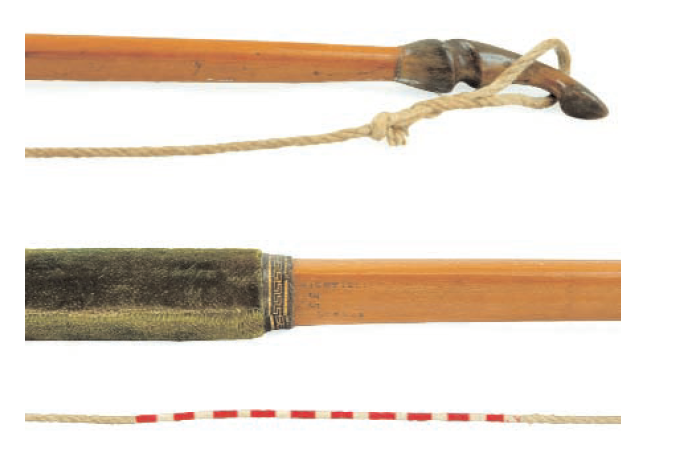
The heyday of archery as a fashionable sport was in England in the 18th and 19th centuries. Victorian-era longbows showed some modifications from the war longbows of previous centuries and were usually still made from yew. But they were commonly made from other materials like lancewood, such as this example.
This 19th-century ladies’ bow, made by Philip Highfield of London, has a 35-pound draw weight with horn nocks and a green velvet covered built-up grip. The bowstrings at the time were made from twisted linen.
Korean target ‘gakgung’ bow
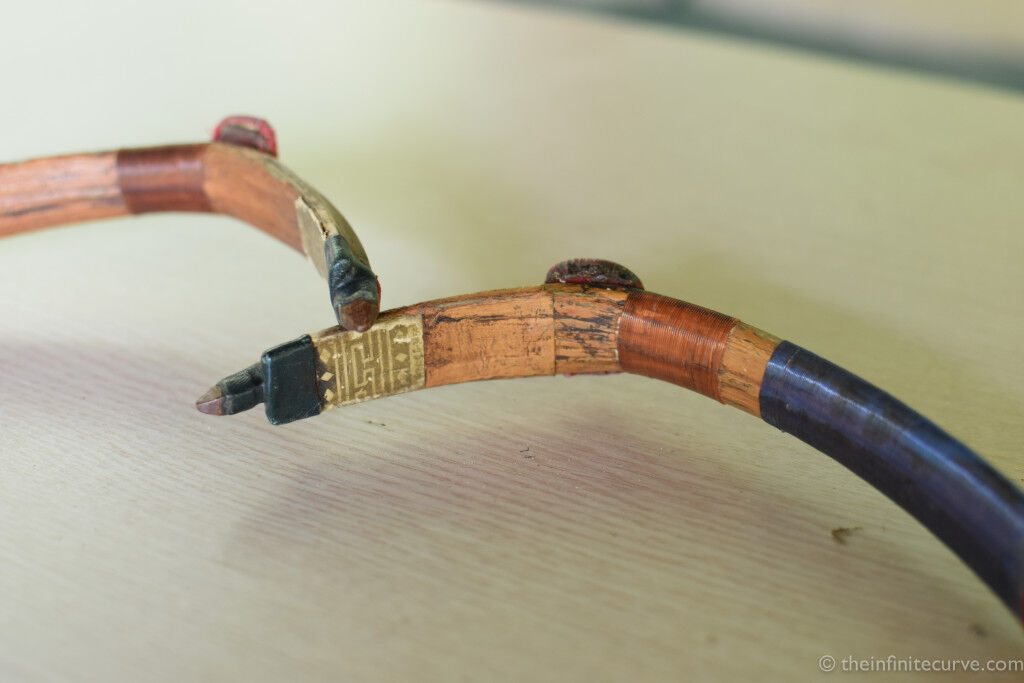
Traditional Korean bows are made of bamboo with mulberry-wood ears; sinew backing; and horn belly, held together with a fish-bladder glue. Made to shoot over target ranges of 145 metres, they are one of the most efficient composite bows ever devised.
These are increasingly difficult and expensive to find in Korea, with just a small handful of bow makers left still producing traditional gakgung bows made as they were originally produced.
Meare Heath
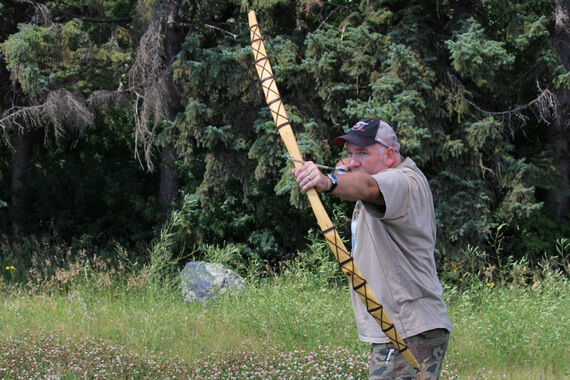
The Meare Heath, like the Holmegaard bow, is one of the great self bow designs of antiquity. Found on the Somerset Levels in the UK, it dates from around 2,600 BC and is the oldest bow found in England.
Many bowyers have made reproductions of the design, which uses wide, paddle-like limbs that would have been likely strengthened by a distinctive cross-banding of leather. You can even get hold of plans to make one yourself using flint tools: perhaps the most exciting piece of experimental archaeology you will ever try.
Arrows and arrowheads
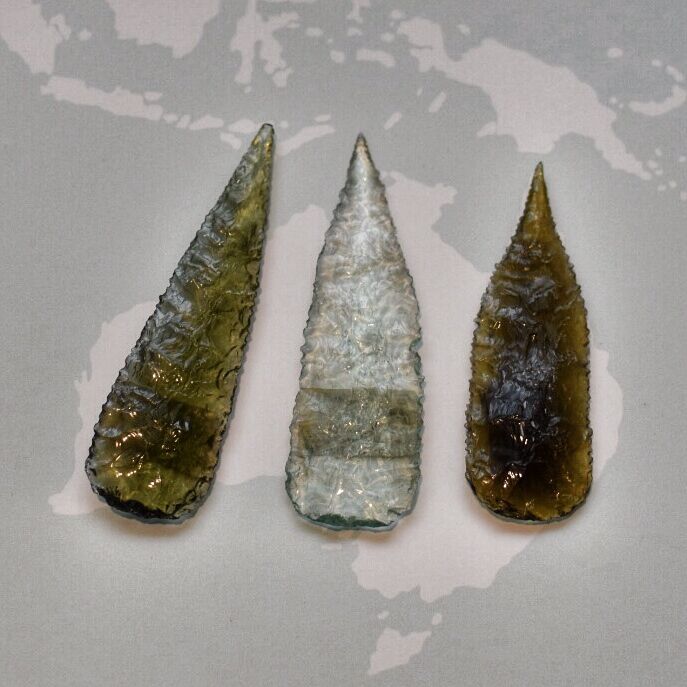
Arrowheads survive much longer than wooden bows, and much of what we know about the early history of archery is based on arrowheads. You can collect Neolithic and later arrowheads from all over the world. These examples, from Australia, are made from knapped glass, an example of recycling materials from other cultures.
Arrows from all over the world are as distinctive as bows. This example, from the Solomon Islands in around the 1920s, is covered with an elaborately plaited cane, which at least suggests it was a status symbol rather than an efficient hunting weapon. (You can see it in the Cambridge Museum of Archaeology.)
Bracer
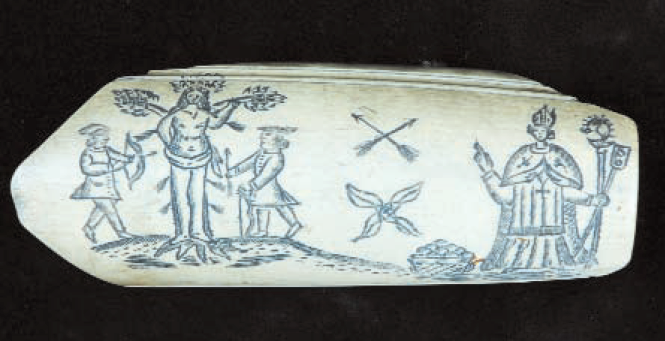
Bracers have been around for as long as archers, and you can find interesting examples from all over the world. This one, a finely shaped and engraved ivory armguard, depicts the martyrdom of Saint Sebastian, the patron saint of archers in Christianity.
This one is associated with the region of Saint Sebastian in Flanders, an area with a rich archery history and home to the oldest archery society in the world.
Quivers
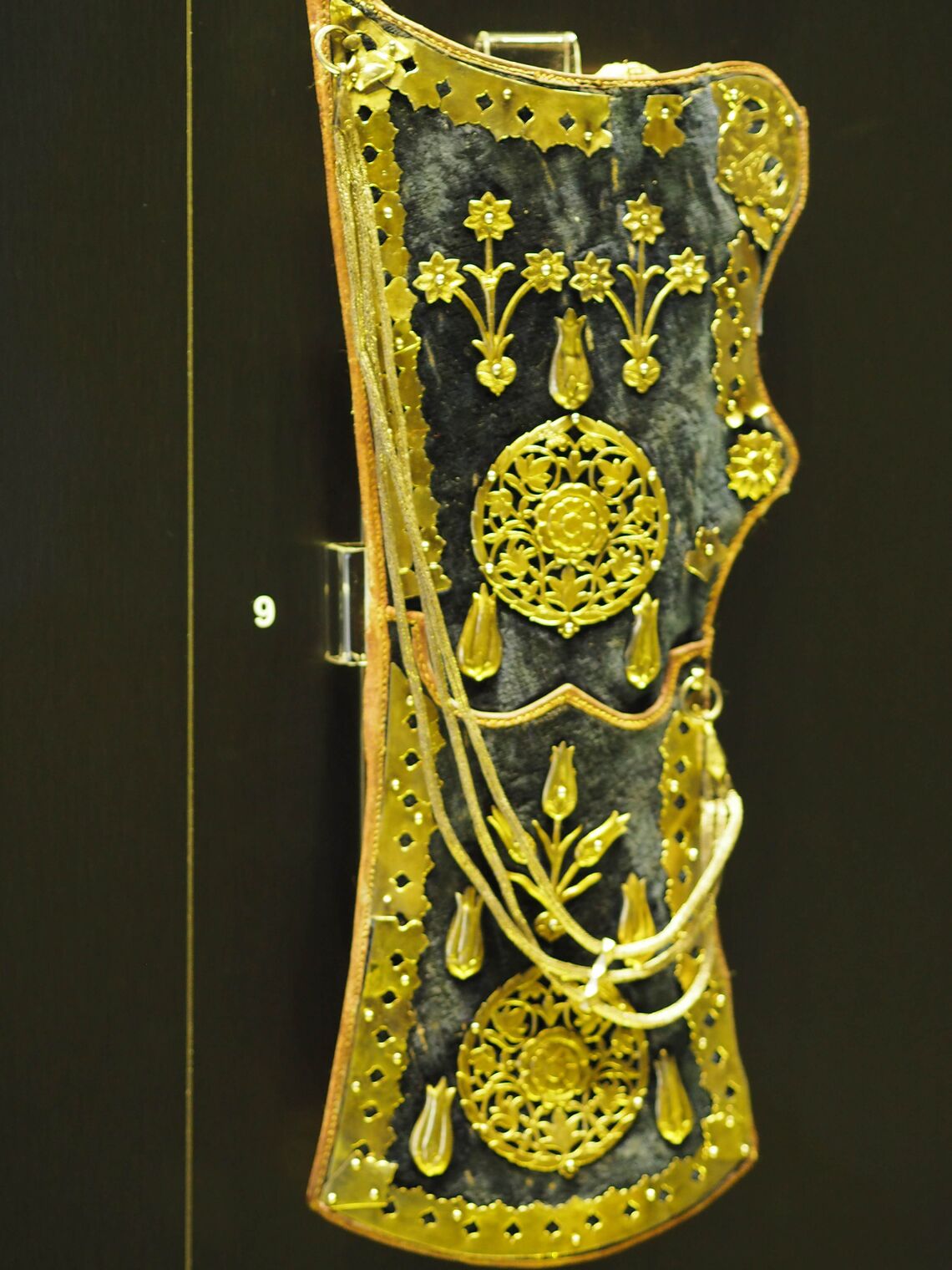
Quivers are distinctive to the culture that produced them. Those that have survived to be antiques are often remarkably decorated, fashionable status symbols as much as practical tools. Many in Asia, especially the black lacquer work Japanese style solid quiver, designed for horseback, still take the breath away.
Few would ever be as bling as this one, which now lives in the Topkapi Palace in Istanbul, and was literally made for a king.









